Wyoming
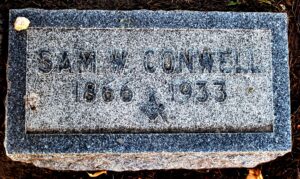
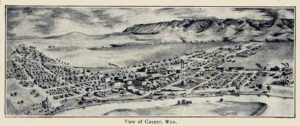 In a city, there are sometimes people who become the influencers of the community. These people are the ones who shape the city into what it is today. These people are considered the “pillars of the community” and are well liked and respected. Many of the city’s most influential people have streets, parks, and even buildings named after them to honor them.
In a city, there are sometimes people who become the influencers of the community. These people are the ones who shape the city into what it is today. These people are considered the “pillars of the community” and are well liked and respected. Many of the city’s most influential people have streets, parks, and even buildings named after them to honor them.
In Casper, Wyoming, where I live, that “pillar of the community” was a man from Iowa named Samuel W Conwell. Conwell was that “man about town” socialite who was well liked and respected. He really cared about his adopted community, and he helped to shape it into the city it is today. The people of Casper totally agreed that Samuel W Conwell was an amazing influencer in Casper, so they named a 19-block street after him. Conwell Street begins at the East 1st Street intersection where Conwell Park is located. Conwell was born on June 26, 1866, in Iowa, the Hawkeye State, but he moved to Casper around 1895 and immediately began to make his mark on our little town. Over the next four decades, he worked at a number of jobs, including as cashier at the Richards and Cunningham Bank and the Casper National Bank, and later he was the Secretary-Treasurer for the Nicolaysen Lumber Company. Samuel Conwell was a man who wore several hats in his life. He was also an early Casper Fireman.
Some of his other notable milestones achieved while living in and influencing the growth and progress of Casper include serving on high school and district school boards for three decades and helping to build the high school (now known as Natrona County High School, as well as shaping Casper’s educational progress during his time on those boards. Conwell was a county commissioner from 1911-1914. In addition to being a fireman Conwell helped organize the Casper Volunteer Fire Department and then served as its Chief, too. He was the past president of the Casper Chamber of Commerce, and also served as chairman of its traffic committee. In 1921, he was appointed by Governor Carey to the State Highway Commission, where he served the rest of his life. His many contributions to our community, definitely earned him the honors he was later given.
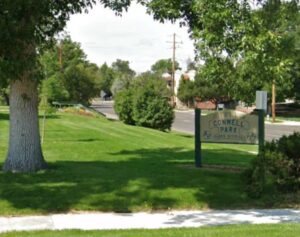
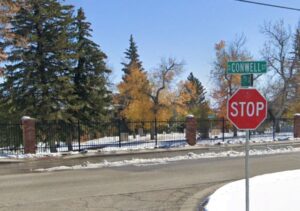
After a long illness, Samuel Conwell died at his home on 241 West 9th Street, on January 31, 1933, at the age of 66. Conwell Street and Conwell Park were not names given randomly by the developer who was just trying to come up with the names, but rather they are names given to represent a pillar of the community, and a man whose spirit lives on in the city.
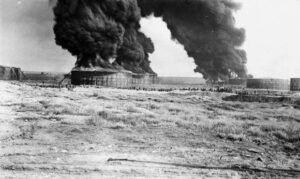 Recently, oil has taken a huge political hit, but most people know that oil is used for far more than the running vehicles. Oil has provided necessary energy to the United States, and even the electric cars can’t exist without petroleum products to make the wiring, tires, seats, floormats, hoses, and much more. In fact, most of us know that there is almost no area of life that isn’t affected by oil. It is part of the makeup of so many things. So, it is silly to think that we can run anything in this world completely void of oil. Living in Wyoming, I know of the value of oil, and many in my family work or have worked in the oil industry.
Recently, oil has taken a huge political hit, but most people know that oil is used for far more than the running vehicles. Oil has provided necessary energy to the United States, and even the electric cars can’t exist without petroleum products to make the wiring, tires, seats, floormats, hoses, and much more. In fact, most of us know that there is almost no area of life that isn’t affected by oil. It is part of the makeup of so many things. So, it is silly to think that we can run anything in this world completely void of oil. Living in Wyoming, I know of the value of oil, and many in my family work or have worked in the oil industry.
Casper, Wyoming has deep roots in the oil industry, and has long provided necessary energy for the nation. Casper’s roots began early on. In 1895, a man named Mark Shannon and a group of Pennsylvania investors opened the state’s first oil refinery in Casper. It was the beginning of an important economic future for Casper and the state. At first, the refinery was able to produce 100 barrels of lubricants per day…not a lot by today’s standards, but in those days, it was phenomenal. Since then, the oil industry has enjoyed a long and successful history, even if the industry did struggle at times. Wyoming is a “Boom-and-Bust” state. We have always been subject to that cycle.
Nevertheless, the early oil fields were quite successful. The Salt Creek and Shannon fields are located in central 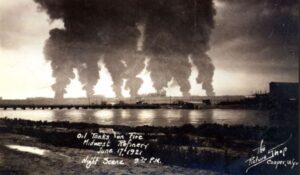 Wyoming. With them came the refineries and later, out of necessity, the tank farm oil storage facilities. Storing large quantities of oil, while relatively safe, faces the inevitable possibility of a fire. Safety was always a goal, but it seems an impossible task to stop all fires. The Casper refinery had their first boiler fire on March 5, 1895. Then came the construction of the Casper Tank Farm. According to the Natrona Tribune, reporting on April 18, 1895, “Workmen are now busy sinking a six-hundred-barrel storage reservoir for crude oil and a number of other new tanks and the machinery necessary to finish all grades of oil will be placed as soon as workmen can do so.” I’m sure this was both for storage and safety, but with oil, there is no guarantee.
Wyoming. With them came the refineries and later, out of necessity, the tank farm oil storage facilities. Storing large quantities of oil, while relatively safe, faces the inevitable possibility of a fire. Safety was always a goal, but it seems an impossible task to stop all fires. The Casper refinery had their first boiler fire on March 5, 1895. Then came the construction of the Casper Tank Farm. According to the Natrona Tribune, reporting on April 18, 1895, “Workmen are now busy sinking a six-hundred-barrel storage reservoir for crude oil and a number of other new tanks and the machinery necessary to finish all grades of oil will be placed as soon as workmen can do so.” I’m sure this was both for storage and safety, but with oil, there is no guarantee.
That fact was never made so clear as it was on June 17, 1921, when lightning caused seven oil tanks to catch fire. This became known as the Midwest Oil Tank Farm Battle…and what a battle it was. In those days there was no set plan for fighting a fire in a refinery or a tank farm. It is something you really pray never happens. When lightning struck…in a very real way, they had to figure out how to get it under control, and not lose all of that oil in the tanks. Someone came up with the idea of piercing the tanks below the fire line, thus allowing the oil to drain into the fire dykes. The oil could then be scooped up and pumped into surrounding tanks that were not involved in the fire. It was definitely a great idea, but how were they going to do that?
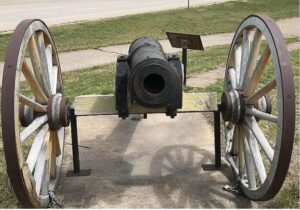
After giving it some thought, they decided to use some cannons from World War I. The first shot from the cannon hit high, and the oil gushed out toward the men firing the cannon. I’m sure that with the fires around them they must have panicked at least a little bit. These men weren’t firefighters. They were soldiers, so fire was not the enemy they were used to fighting. In all, nine shots were fired that day. One was aimed at a very high angle, and it flew off into areas unknown. Two of them went very low and were buried in the dirt under the tanks. Six shots were right on target. In the end, the operation was successful, and the fire was finally brought under control.

 My sister, Caryl Reed is my junior by three years, but since we are both grown up, the years really don’t make much difference. It’s the same with all my sisters really. We are all like-minded…the products of the good upbringing of our parents, Al and Collene Spencer. While our parents are in Heaven now, I think they would be very proud of their “prayer warrior” daughters. Our parents raised us to be believing Christians, and in these turbulent times, I can’t imagine living without God’s leading in my life. I know my sisters feel the same way.
My sister, Caryl Reed is my junior by three years, but since we are both grown up, the years really don’t make much difference. It’s the same with all my sisters really. We are all like-minded…the products of the good upbringing of our parents, Al and Collene Spencer. While our parents are in Heaven now, I think they would be very proud of their “prayer warrior” daughters. Our parents raised us to be believing Christians, and in these turbulent times, I can’t imagine living without God’s leading in my life. I know my sisters feel the same way.
Caryl currently lives in Rawlins, for a few more months. Then she and her husband Mike Reed will begin their new life on “the ranch” outside Casper. They have been working very hard to get their beautiful ranch up and running. They had a home built there, as well as a “barn” with a huge garage area to store their farming equipment in and a recreation/trophy room to house the trophies from Mike’s hunting trips. There is also an apartment above the “barn” which can be rented out or used as a guest house if needed. They have had their first two crops of hay already, and these were both sold to their neighbor, who was so excited to buy locally and 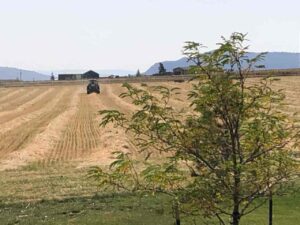
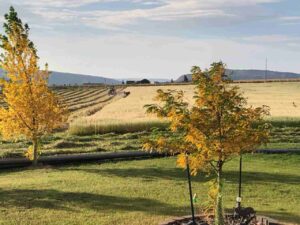 very close to home. All in all, “the ranch” has been a very successful “side gig” for them.
very close to home. All in all, “the ranch” has been a very successful “side gig” for them.
Of course, the “side gig” part of the ranch isn’t the main reason they bought the ranch. Caryl and Mike love the atmosphere of the ranch. It is far enough outside of town to be quiet and peaceful. The views from their windows, especially from the dining room are simply stunning. Being there is the single most relaxing part of their lives today…as well as the most work, because on a working ranch, sitting for hours admiring the view of the mountains isn’t really an option for very long. Caryl and Mike are always improving the place. They basically built everything from scratch. There was a small house…that their friend and ranch hand lives in; and birthing buildings…that had to be torn down. Other than that, the ranch was raw land. Now is it beautiful, and a wonderful home for them.
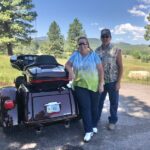
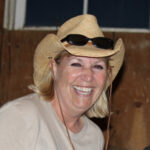 Caryl has always been a country girl at heart. I lived in the country for about 20 years, but I can’t say that I was a country girl. As my sister, Alena Stevens once said, “You are a city girl. You just sleep in the country.” Hahahahaha!! So true, Alena. So true. Caryl, however, really always wanted to live on a ranch, with horses, and possibly a number of other animals, especially dogs. Caryl has always embraced everything country, and very soon, she will be living there full time. Today is Caryl’s birthday. Happy birthday Caryl!! Have a great day!! We love you!!
Caryl has always been a country girl at heart. I lived in the country for about 20 years, but I can’t say that I was a country girl. As my sister, Alena Stevens once said, “You are a city girl. You just sleep in the country.” Hahahahaha!! So true, Alena. So true. Caryl, however, really always wanted to live on a ranch, with horses, and possibly a number of other animals, especially dogs. Caryl has always embraced everything country, and very soon, she will be living there full time. Today is Caryl’s birthday. Happy birthday Caryl!! Have a great day!! We love you!!
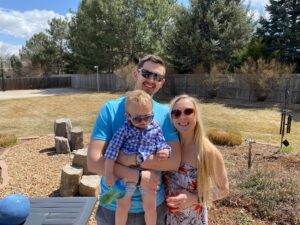
 My grandniece, Katy Herr has been living the dream lately…well, for the past several years really. Katy’s life did a complete 180° turn in 2019, when she met her future husband, Dylan Herr. Dylan was different than anyone else Katy had ever known. Dylan was her soulmate. Before Dylan, Katy really felt like life was passing her by. She wanted to be a wife and mother, and none of that was working out.
My grandniece, Katy Herr has been living the dream lately…well, for the past several years really. Katy’s life did a complete 180° turn in 2019, when she met her future husband, Dylan Herr. Dylan was different than anyone else Katy had ever known. Dylan was her soulmate. Before Dylan, Katy really felt like life was passing her by. She wanted to be a wife and mother, and none of that was working out.
Today, Katy is married to Dylan, and they have a beautiful little boy named Max, who is almost two years old. Together, Katy’s men have made her life as close to perfect as it gets. To make life even better, Katy and Dylan recently bought a new house…their first together, and they just couldn’t be happier. They had moved from Brighton, Colorado to Casper, Wyoming to open a new store, Dylan and his family own and operate a number of Red Wing Shoe Stores. They will be stationed here, but Dylan will likely have to travel to the other stores periodically. That said, since they can, Katy and Max will probably go along, so they can all visit with Dylan’s family. Katy and Dylan are also enjoying their roles as community representatives. They are very active in fund raisers and other ways to make our community a better place to live. They rather love the dressing up for date night aspect of all that being community representative entails.
Katy is very much enjoying being a stay-at-home wife and mom, and Max keeps her very busy, as any two-year-old child will do. She also has a beautiful home that she is working on making their own. They also enjoy 
 going to the lake. Katy pretty much grew up around Alcova Lake, because her grandparents, Chip and Trish Burgess had a cabin at the lake. I’m sure that Max will be as much a “fish” as Katy and her brother, Keifer were. Katy and Dylan also love to tour area gardens and parks. Max loves to be outside and to play in the grass and on the swings. The whole family enjoys their time together and with other family members. These days, things are going great for Katy, and I’m sure it will only get better. She has so much life to look forward too. Today is Katy’s birthday. Happy birthday Katy!! Have a great day!! We love you!!
going to the lake. Katy pretty much grew up around Alcova Lake, because her grandparents, Chip and Trish Burgess had a cabin at the lake. I’m sure that Max will be as much a “fish” as Katy and her brother, Keifer were. Katy and Dylan also love to tour area gardens and parks. Max loves to be outside and to play in the grass and on the swings. The whole family enjoys their time together and with other family members. These days, things are going great for Katy, and I’m sure it will only get better. She has so much life to look forward too. Today is Katy’s birthday. Happy birthday Katy!! Have a great day!! We love you!!
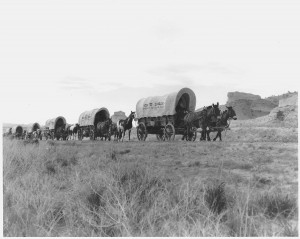
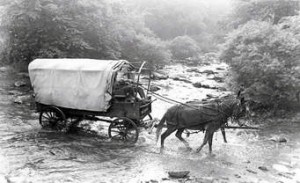 It was inevitable really…the migration of the people of the United States to the west coast, in search of gold, adventure, and more land. The east was filling up, and there was no place else to go, but west. Of course, many people would either not make it all the way to the West; choosing rather to homestead along the way, die, or actually make it to the West, and then return to the East. Nevertheless, before anyone could find out is life on the west coast suited them or not, they had to get to the west coast, and on May 16, 1842, the first major wagon train to the northwest departed from Elm Grove. Missouri, on the Oregon Trail. This was a little bit of a risky move, because US sovereignty over the Oregon Territory was not clearly established until 1846.
It was inevitable really…the migration of the people of the United States to the west coast, in search of gold, adventure, and more land. The east was filling up, and there was no place else to go, but west. Of course, many people would either not make it all the way to the West; choosing rather to homestead along the way, die, or actually make it to the West, and then return to the East. Nevertheless, before anyone could find out is life on the west coast suited them or not, they had to get to the west coast, and on May 16, 1842, the first major wagon train to the northwest departed from Elm Grove. Missouri, on the Oregon Trail. This was a little bit of a risky move, because US sovereignty over the Oregon Territory was not clearly established until 1846.
Nevertheless, American fur trappers and missionary groups had been living in the region for decades, along with Indians who had settled the land centuries earlier. Of course, everyone out there had a story to tell, and there were dozens of books and lectures that proclaimed Oregon’s agricultural potential. You can’t tell a story without creating interest somewhere. Even a boring story is of interest to someone, and this was no boring story. With the books and lectures coming out of the West, the white American farmers were very interested. They saw a chance to make their fortune, or at least to become independent. The actual first overland immigrants to Oregon, intended to farm primarily. A small band of 70 pioneers left Independence, Missouri in 1841. The stories they had heard from the fur traders brought them along the same route the traders had blazed, taking them west along the Platte River through the Rocky Mountains via the easy South Pass in Wyoming and then northwest to the Columbia River…basically through some on my own stomping grounds. Eventually, the trail they took was renamed by the pioneers, who called it the Oregon Trail.
The migration, once started, had little chance of being stopped, and in 1842, a slightly larger group of 100 pioneers made the 2,000-mile journey to Oregon. With the success of these two groups, the inevitable happened, accelerated in a major way by the severe depression in the Midwest, combined with a flood of propaganda from fur traders, missionaries, and government officials extolling the virtues of the land. They may have had good intentions, but it is never a good idea to lie to the public. With the disinformation on their minds, farmers dissatisfied with their prospects in Ohio, Illinois, Kentucky, and Tennessee, hoped to find better lives in the supposed paradise of Oregon. With that another type of “rush” began. Much like the “gold rush” years, the farmers saw the land as their “gold” and headed west.
So, on this day in 1843, approximately 1,000 men, women, and children climbed aboard their wagons and steered their horses west out of the small town of Elm Grove, Missouri. It was the first real wagon train, comprised of more than 100 wagons with a herd of 5,000 oxen and cattle trailing behind. The train was led by Dr Elijah White, a Presbyterian missionary who had made the trip the year before. At first the trail was fairly easy, traveling over the flat lands of the Great Plains. There weren’t many obstacles in that area, and few river crossings, some of which could be dangerous for wagons. The bigger risk in the early days was the danger of Indian attacks, but they were still few and far between…at first anyway. The wagons were drawn into a circle at night to give the pioneers better protection from any attack that might come. They were very afraid of the Indians, who were enough different that they seemed deadly…to the pioneers anyway, and the Indians fear the White Man because of their weapons, and they were angry because the White Man wanted the land. In reality, the pioneers were far more in danger from seemingly mundane causes, like the accidental discharge of firearms, falling off mules or horses, drowning in river crossings, and disease. The trail became much more difficult, with steep ascents and descents over rocky terrain, after the train entered the mountains. The pioneers risked injury from overturned and runaway wagons.
Nevertheless, the wagon trains persevered, and the migrant movement continued until the West was populated. As for the 1,000-person party that made that original journey way back in 1843…the vast majority survived to reach their destination in the fertile, well-watered land of western Oregon. The next migration, in 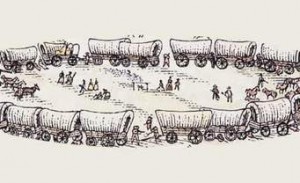
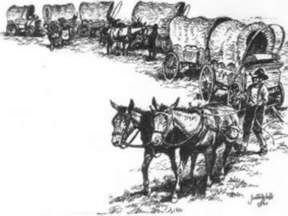 1844 was smaller than that of the previous season, but in 1845 it jumped to nearly 3,000. Migration to the West was here to stay and the trains became an annual event, although the practice of traveling in giant convoys of wagons soon changed to many smaller bands of one or two-dozen wagons. The wagon trains really became a thing of the past in 1884, when the Union Pacific constructed a railway along the route.
1844 was smaller than that of the previous season, but in 1845 it jumped to nearly 3,000. Migration to the West was here to stay and the trains became an annual event, although the practice of traveling in giant convoys of wagons soon changed to many smaller bands of one or two-dozen wagons. The wagon trains really became a thing of the past in 1884, when the Union Pacific constructed a railway along the route.
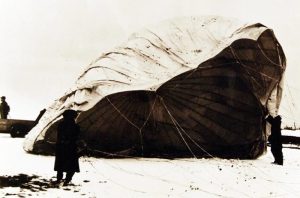 Thermopolis, Wyoming…a favorite destination for my husband and me. We take a trip there every year for our anniversary. I suppose that for many people, Thermopolis would seem too quiet, too small, and too little to do, but for us it is just perfect. With its hot springs and river walk trail, it is just perfect for us, and the hot spring ponds filled with goldfish of a size you simply cannot imagine until you see them. I’ve been told that they came from people getting rid of the small goldfish, and the warm water, along with the pond size, allowed the smaller goldfish to grow quite large. Thermopolis also had a dinosaur museum, although we have never been there. We go to the area for the hot tub and the trail for sure.
Thermopolis, Wyoming…a favorite destination for my husband and me. We take a trip there every year for our anniversary. I suppose that for many people, Thermopolis would seem too quiet, too small, and too little to do, but for us it is just perfect. With its hot springs and river walk trail, it is just perfect for us, and the hot spring ponds filled with goldfish of a size you simply cannot imagine until you see them. I’ve been told that they came from people getting rid of the small goldfish, and the warm water, along with the pond size, allowed the smaller goldfish to grow quite large. Thermopolis also had a dinosaur museum, although we have never been there. We go to the area for the hot tub and the trail for sure.
While Thermopolis might seem like the safest little out of the way place, there was a time when it was actually a target for an attack. During World War II, the Japanese set their sights on Wyoming. It makes little sense to me, but it was the target they chose. During World War II, the Japanese were experimenting with a new kind of bomb. It really wasn’t the greatest idea, but they did send some of them out. The problem with balloons is that it’s difficult to control where it is going…especially when it is unmanned. It’s hard to say what the exact target was, but on December 5, 1944, coal miners outside of Thermopolis heard something from the skies above and saw an explosion streak across the dark sky. When the object landed, it was discovered to be a Japanese Fu-Go Balloon Bomb. Though the Japanese launched 9,300 of these bombs, only about 300 made it to land, and the Thermopolis bomb was the first one to reach the United States. 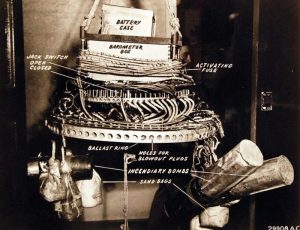
I find it hard to believe that the first Fu-Go Balloon Bomb made it all the way to Wyoming before exploding, when the only Fu-Go Balloon Bomb to actually kill anyone was one that landed near Bly, Oregon on May 5, 1945, that killed a pregnant woman and five children after they approached the unexploded balloon that had landed nearby. The balloon exploded as they investigated it. After that, the public was warned to stay away from the objects, but the news stories were still scarce. In fact, the Japanese only ever learned of the landing in Wyoming!! I have no idea how the media held themselves back.
Landing so many balloons in America was an impressive feat because the inter-continental attack was considered impossible at the time. Whatever the Japanese had hoped to gain by this relatively ineffective “bomb” is unknown, but it was a real failure. My guess is that most of them exploded over the ocean, doing no damage. Nevertheless, these massive balloons were a bit of a marvel…so to speak. They had to carry more than 1,000 pounds across the ocean, which was no easy task, especially for technology at the time. The fact that any of them made it here was impressive, I suppose. They were impressive balloons from a technologic standpoint. They were controlled by altimeters that kept the balloon in the newly discovered jet stream until it was over America, where it would fall to the ground and detonate…or so was the plan. The goal of the mission was to cause panic and fear in the United States, but a media blackout meant that these landings and 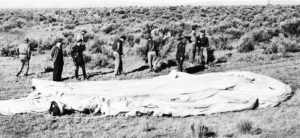 explosions went unreported. A blackout was the only way.
explosions went unreported. A blackout was the only way.
These attacks were actually quite amazing, because they were the longest ranged assaults in the history of warfare. It wasn’t until 1982 (during the Falkland Islands War) that the distance was topped. Today, the story of the Fu-Go Balloon Bombing is rarely told in Wyoming outside of Thermopolis, where it has supposedly become local folklore. Strange that I have never heard of it, even with the many years we have been spending our anniversary there. I will most definitely have to ask about it the next time we go.

 My niece, Machelle Moore has been looking at a different kind of future these days. As a mom, I know that the years of her children’s childhood have flown past with unbelievable speed. Her eldest son, Weston moved to Butte, Montana from their home in Powell, Wyoming this past year, and while that isn’t a cross country move, it does leave Machelle’s home with three people instead of four. Now, her youngest son, Easton is going to be graduating from high school, and the inevitable time when he will also leave home is just around the corner. Easton hasn’t specifically made plans to move out or away, but Weston hadn’t either…until he did. Most parents will face the empty nest moment at some point in their life, and it is not an easy one.
My niece, Machelle Moore has been looking at a different kind of future these days. As a mom, I know that the years of her children’s childhood have flown past with unbelievable speed. Her eldest son, Weston moved to Butte, Montana from their home in Powell, Wyoming this past year, and while that isn’t a cross country move, it does leave Machelle’s home with three people instead of four. Now, her youngest son, Easton is going to be graduating from high school, and the inevitable time when he will also leave home is just around the corner. Easton hasn’t specifically made plans to move out or away, but Weston hadn’t either…until he did. Most parents will face the empty nest moment at some point in their life, and it is not an easy one.
Machelle and her husband, Steve have been happily married since August 14, 1999, but when their boys are both out of the house, that inevitable feeling of a “too quiet house” will creep in. They will have to learn to find new hobbies, new activities, and new ways to spend their evenings. The good news is that Machelle and Steve have a great marriage. They love to do lots of things together, like camping, hiking and exploring, and their favorite…rock hunting. I know that like every “empty nester” among us has found, life does go on and it’s even good, whether our children live at home or not. And eventually, the grandchildren start to come, and the home is filled with new life. You never know whan that will start, however, so Machelle and Steve will have lots of good times in the meantime.
For now, Machell and Steve are busy with all the senior year activities that Easton has going on, like prom and Easton’s dating and working life. There are lots of exciting things happening during a kid’s senior year, like senior pictures, and soon graduation planning and rehearsals. The only problem with all that activity is that it 
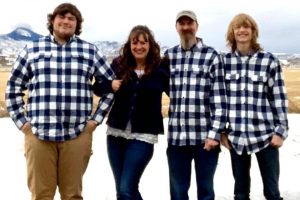 only serves to make the year go by faster…rather defeating the whole idea of “putting the brakes” on the year. Well, as we all know, it just doesn’t work that way. Nevertheless, Machelle and Steve will survive the empty nest, whenever it arrives, just like the rest of the parents in the world have done. For now, I pray the time slows down just a bit before that fateful day arrives. Today is Machelle’s birthday. Happy birthday Machelle!! Have a great day!! We love you!!
only serves to make the year go by faster…rather defeating the whole idea of “putting the brakes” on the year. Well, as we all know, it just doesn’t work that way. Nevertheless, Machelle and Steve will survive the empty nest, whenever it arrives, just like the rest of the parents in the world have done. For now, I pray the time slows down just a bit before that fateful day arrives. Today is Machelle’s birthday. Happy birthday Machelle!! Have a great day!! We love you!!

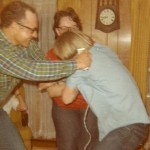 Uncle Eddie Hein was a soft-spoken man, but that didn’t mean that he wasn’t a funny man. He loved to laugh, and he had a great laugh too. That is probably one of the things I miss most about Uncle Eddie…that and the great smile that went with the great laugh. He loved practical jokes…like pretending to give my husband, Bob Schulenberg, his nephew, a buzzcut in the 70s, when long hair was the style. I think Bob knew that the clippers weren’t plugged in, but he went along with the joke anyway. It is my guess that my in-laws, Walt and Joann Schulenberg put Eddie up to the joke, almost hoping he would actually cut Bob’s hair. Of course, Eddie would never have done that, but it was a funny thought anyway. It was a typical kind of joke Eddie would pull on people.
Uncle Eddie Hein was a soft-spoken man, but that didn’t mean that he wasn’t a funny man. He loved to laugh, and he had a great laugh too. That is probably one of the things I miss most about Uncle Eddie…that and the great smile that went with the great laugh. He loved practical jokes…like pretending to give my husband, Bob Schulenberg, his nephew, a buzzcut in the 70s, when long hair was the style. I think Bob knew that the clippers weren’t plugged in, but he went along with the joke anyway. It is my guess that my in-laws, Walt and Joann Schulenberg put Eddie up to the joke, almost hoping he would actually cut Bob’s hair. Of course, Eddie would never have done that, but it was a funny thought anyway. It was a typical kind of joke Eddie would pull on people.
Eddie is my father-in-law, Walt Schulenberg’s half brother, and so it was an annual trip from Casper, Wyoming to Forsyth, Montana that the Schulenberg’s took each year, to keep the family close to the aunt, uncles, and cousins that lived there, as well as to my father-in-law’s mom, Vina Hein, and step-dad, Walt Hein. When Bob and I got married, we wanted to continue that tradition, and I have always been glad we did. My girls had the privilege of knowing some of the most amazing people through those trips. I have always believed in the importance of family, and have hopefully instilled those same traditions on my kids and grandkids.
Eddie was a hard-working man, who worked hard in the coal mines, and then came home to work hard around the home he shared with his wife, Pearl, and children, Larry and Kim. He turned their smaller mobile home into a very nice house, with plenty of room for the whole family. He and Pearl also raised a wonderful garden, and canned lots and lots of vegetables. That garden saved the family lots of money in grocery bills. Canning I could do, but gardening…not so much, so I don’t mind telling you that I was a little bit jealous of those who can grow gardens, vegetable or flower.
Eddie was a mechanic by trade, and never really wanted to be a rancher, although he could do that work too. I think Eddie could do anything he put his mind to. He was a very talented Jack of all Trades. The Forsyth area is abundant in river rock, because of the Yellowstone River that flows through town. Eddie built a beautiful 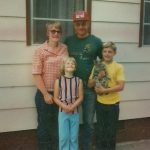
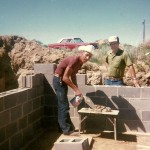 fireplace in their home out of that river rock. It was just stunning, and one of my favorite parts of the home he built. It not only heated the home, but it made it look amazing too. Eddie also helped my father-in-law when he was building the house he built in the Casper area.
fireplace in their home out of that river rock. It was just stunning, and one of my favorite parts of the home he built. It not only heated the home, but it made it look amazing too. Eddie also helped my father-in-law when he was building the house he built in the Casper area.
Eddie went home to be with the Lord on October 16, 2019, and we all miss him very much. In my mind’s eye, I can still visualize his smiling face and his great laugh. Today would have been Uncle Eddies 78th birthday. Happy birthday in Heaven, Uncle Eddie. We love and miss you very much.
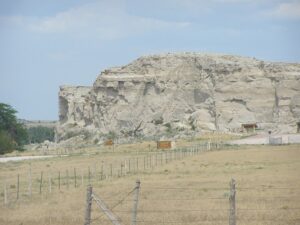 I have lived in Wyoming since I was three years old, and so sometimes it’s easy for me to forget some of the places that have great historical value, but they are not as well known as some of the other places, like Yellowstone National Park. Register Cliff is one such landmark that I don’t often think about, although I have been there, and it really is a cool place.
I have lived in Wyoming since I was three years old, and so sometimes it’s easy for me to forget some of the places that have great historical value, but they are not as well known as some of the other places, like Yellowstone National Park. Register Cliff is one such landmark that I don’t often think about, although I have been there, and it really is a cool place.
Register Cliff is a sandstone cliff, that is located on the Oregon Trail. The cliff is a soft, chalky, limestone wall rising more than 100 feet above the North Platte River. When my sisters and I were kids, our parents would take us on trips, and point out every (and I mean every) Oregon Trail marker that we passed. In Wyoming, that is a lot of markers. As the emigrants made their way on the Oregon Trail, searching for a better life in the west, they came upon this cliff and chiseled the names of their families on the soft stones of the cliff. It was one of the key checkpoint landmarks for parties heading west along the Platte River valley west of Fort John, Wyoming which allowed 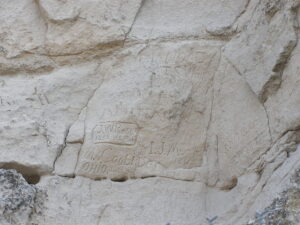 travelers to verify they were on the correct path up to South Pass and not moving into impassable mountain terrains. Geographically, it is on the eastern ascent of the Continental divide leading upward out of the great plains in the eastern part of Wyoming.
travelers to verify they were on the correct path up to South Pass and not moving into impassable mountain terrains. Geographically, it is on the eastern ascent of the Continental divide leading upward out of the great plains in the eastern part of Wyoming.
As more and more people “registered” on the cliff, word started to get around about this notable historic landmark. People quickly began to see the value of the cliff. Besides knowing that they were going the right direction, the emigrants realized that they were a part of history. Their names would forever be carved in the stone of the cliff, stating that they were among the brave people who moved to the west to settle the land.
The practice soon became the custom of the day, and the other northern Emigrant Trails that split off farther west such as the California Trail and Mormon Trail began to follow the custom too, inscribing their names on its 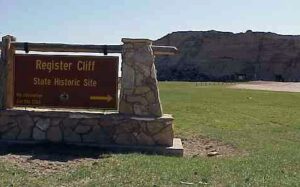 rocks during the western migrations of the 19th century. It is estimated that 500,000 emigrants used these trails from 1843–1869. Unfortunately, up to one-tenth of the emigrants died along the way, usually due to disease and other hazards. Nevertheless, those who made it this far were forever known to those who stop by. Register Cliff is the easternmost of the three prominent emigrant “recording areas” located within Wyoming. The other two are Independence Rock and Names Hill. The site was where emigrants camped on their first night west of Fort Laramie. The property was donated by Henry Frederick to the state of Wyoming, to be preserved. Register Cliff was listed on the National Register of Historic Places in 1969.
rocks during the western migrations of the 19th century. It is estimated that 500,000 emigrants used these trails from 1843–1869. Unfortunately, up to one-tenth of the emigrants died along the way, usually due to disease and other hazards. Nevertheless, those who made it this far were forever known to those who stop by. Register Cliff is the easternmost of the three prominent emigrant “recording areas” located within Wyoming. The other two are Independence Rock and Names Hill. The site was where emigrants camped on their first night west of Fort Laramie. The property was donated by Henry Frederick to the state of Wyoming, to be preserved. Register Cliff was listed on the National Register of Historic Places in 1969.
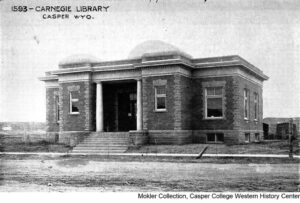 Andrew Carnegie is a name most people have heard of, at least when you think of places like Carnegie Hall, but that isn’t something that has much in common with places like Wyoming…or does it? Andrew Carnegie was born to Margaret Morrison Carnegie and William Carnegie in Dunfermline, Scotland. The family lived in a typical weaver’s cottage with only one main room, consisting of half the ground floor, which was shared with the neighboring weaver’s family. It was here in very humble beginnings that Andrew Carnegie made his debut. When Carnegie was 12, his father had fallen on very hard times as a handloom weaver. To add to the family’s predicament, the country was in starvation. His mother helped support the family by assisting her brother and by selling potted meats at her “sweetie shop,” making her the primary income in the family. The family was struggling to make ends meet and they knew they weren’t going to make it…at least not in Scotland. The Carnegies then decided to borrow money from George Lauder, Sr and move to Allegheny, Pennsylvania, in the United States in 1848 for the prospect of a better life. In September 1848, Carnegie arrived with his family in Allegheny. That was not the end of their struggles, however. Carnegie’s father struggled to sell his product on his own, but eventually father and son both received job offers at the same Scottish-owned cotton mill, Anchor Cotton Mills. At least they had some income, meager as it was.
Andrew Carnegie is a name most people have heard of, at least when you think of places like Carnegie Hall, but that isn’t something that has much in common with places like Wyoming…or does it? Andrew Carnegie was born to Margaret Morrison Carnegie and William Carnegie in Dunfermline, Scotland. The family lived in a typical weaver’s cottage with only one main room, consisting of half the ground floor, which was shared with the neighboring weaver’s family. It was here in very humble beginnings that Andrew Carnegie made his debut. When Carnegie was 12, his father had fallen on very hard times as a handloom weaver. To add to the family’s predicament, the country was in starvation. His mother helped support the family by assisting her brother and by selling potted meats at her “sweetie shop,” making her the primary income in the family. The family was struggling to make ends meet and they knew they weren’t going to make it…at least not in Scotland. The Carnegies then decided to borrow money from George Lauder, Sr and move to Allegheny, Pennsylvania, in the United States in 1848 for the prospect of a better life. In September 1848, Carnegie arrived with his family in Allegheny. That was not the end of their struggles, however. Carnegie’s father struggled to sell his product on his own, but eventually father and son both received job offers at the same Scottish-owned cotton mill, Anchor Cotton Mills. At least they had some income, meager as it was.
Young Andrew Carnegie was destined for better things, however. In his adult life, Andrew Carnegie enjoyed success in businesses ranging from oil to railroads to steel, Carnegie became one of the wealthiest Americans of his era. After selling off his businesses and retiring in the early part of the 20th-century, Carnegie spent the remainder of his life giving away much of his enormous wealth. It was this portion of Carnegie’s life that would forever tie him to Casper, Wyoming, and to many other towns across the country. Casper’s connection to one of America’s most generous philanthropists can be found right on the corner of Durbin and Second Street downtown…the Natrona County Public Library.
In an incredible display of generosity, Andrew Carnegie’s library foundation helped build over 1,700 public libraries around the country. As word got out, in 1905, Casper mayor Wilson Kimball wrote to the Carnegie Foundation hoping to secure a grant to start a library in his dusty, rapidly growing town. His letter read, in part, “We have a town here of at the present time about 1,500 population and there is probably not a more cosmopolitan town, of its size, in the United States. A Carnegie Library here would benefit a class that are seldom benefited by such institutions, and would afford a quiet, wholesome and instructive resort of character that are too scarce in these western range towns.” The Carnegie Foundation agreed to gift Casper, Wyoming a $10,000 grant. Land for the library was donated to the cause. The small, yet elegant design for the building ended up coming in over budget. The Carnegie Foundation was a bit frustrated, but with a few concessions from Casper, the foundation agreed to another $3,000 to help finish the project. By 1910 at the edge of town, Casper’s library was completed. The building with its classical design, high quality masonry and three domes stood out in the town. Casper was basically still a prairie, with muddy streets and stick buildings in 1910.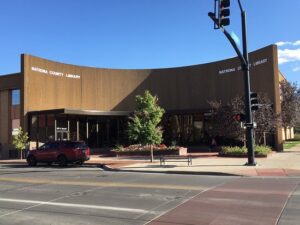
Before long, the library was obviously to small, and in the early 1920s a new design was seamlessly integrated into the original building, adding much needed space for events and collections. After the World Wars, Casper began to grow rapidly, and a prosperous Casper, added a modern addition which opened in 1952. By the late 1960s, the original sections of the Carnegie building had become obsolete and fallen into disrepair. A good portion of the old building had been relegated to storage. Sadly, in 1970, the original building was demolished and the final addition we have today was built. It was the end of the visible Carnegie connection to Casper. In all, Wyoming built a total of 16 Carnegie libraries. Ten remain.

